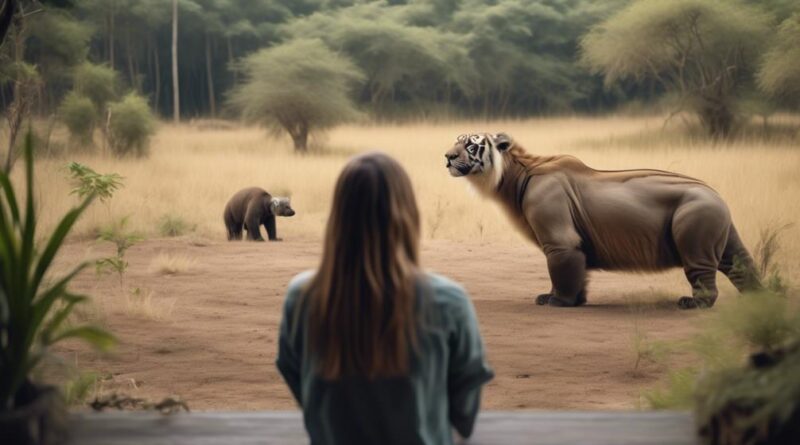9 Tips for Unique Wildlife Encounters
Are you tired of the same old wildlife encounters that leave you feeling like you've seen it all? It's time to step up your game and seek out truly unique and unforgettable experiences with the world's most fascinating creatures.
Whether you're a seasoned wildlife enthusiast or just looking to expand your horizons, these 9 tips will help you elevate your encounters to a whole new level.
From hidden gems to expert guidance, there's a world of extraordinary wildlife waiting for you to discover.
Research the Local Wildlife
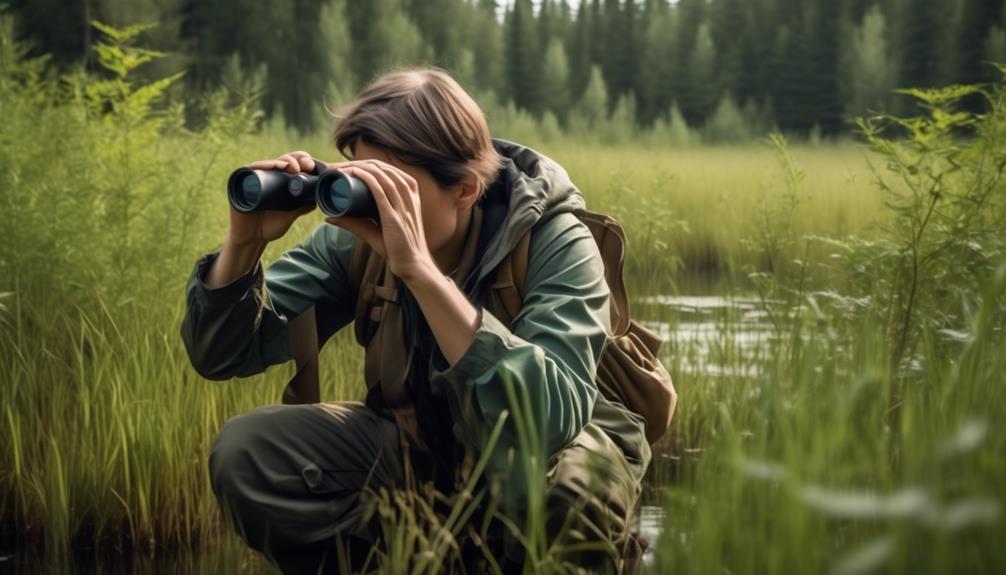
Before embarking on any wildlife encounter, take the time to research the local wildlife in the area you plan to visit. Understanding the local habitats and wildlife behavior can greatly enhance your chances of having a unique and fulfilling wildlife experience.
Start by researching the specific habitats in the area. Is it a dense forest, open savanna, or a wetland? Different wildlife species thrive in different environments, so knowing the local habitat will give you insight into the types of animals you might encounter. For example, if you're visiting a wetland, you may have the opportunity to spot waterfowl, amphibians, and other aquatic species.
Next, delve into the behavior of the wildlife in the region. Are there particular times of day when certain animals are more active? Are there specific mating or feeding behaviors you might witness? Understanding wildlife behavior can help you anticipate where and when to look for certain animals, increasing your chances of a memorable encounter.
Seek Out Off-The-Beaten-Path Locations
To enhance your chances of encountering unique wildlife, seek out off-the-beaten-path locations that are less frequented by tourists and offer a more authentic experience with local fauna. These remote areas often provide incredible opportunities for wildlife photography and animal tracking.
When you venture off the beaten path, you increase your chances of witnessing animals in their natural habitats, undisturbed by human activity. This can lead to more intimate and genuine encounters with wildlife, allowing for better photographic opportunities and a deeper understanding of the animals' behaviors.
Off-the-beaten-path locations are also less likely to be impacted by the negative effects of overtourism, such as habitat destruction and disturbances to wildlife. By choosing to explore these lesser-known areas, you contribute to the conservation of natural habitats and the protection of the wildlife that resides within them.
When engaging in wildlife photography in off-the-beaten-path locations, it's essential to respect the environment and the animals. Approach your subjects quietly and with a respectful distance, allowing them to carry on with their natural activities undisturbed. Utilize your skills in animal tracking to locate wildlife without causing them stress or altering their behaviors.
This approach not only benefits the animals but also enhances the authenticity and ethical value of your wildlife photography. Remember to leave no trace and take only memories and photographs, ensuring that these off-the-beaten-path locations remain pristine for future wildlife enthusiasts.
Choose Early Morning or Dusk Excursions
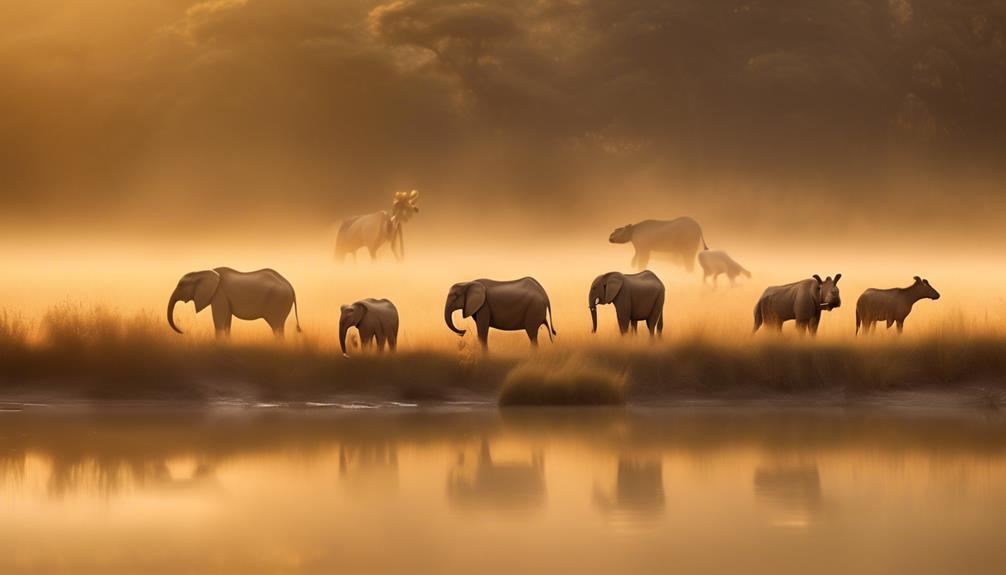
Consider scheduling your wildlife excursions for early morning or dusk to maximize your chances of unique wildlife encounters. These times of day, known as the golden hours, offer the best opportunities to observe wildlife in their natural habitat. Many animals are most active during these times, making it easier to spot them in the wild.
When choosing the best locations for early morning or dusk excursions, look for areas with diverse habitats such as wetlands, forests, or grasslands. These areas typically support a wide variety of wildlife, increasing your chances of encountering different species. National parks, wildlife reserves, and remote nature trails are great options for these excursions.
During the early morning or dusk, wildlife behavior can be quite different from what you might observe during the day. Some animals, like deer and elk, are more likely to be grazing in open fields during these times. Predatory animals, such as big cats or wolves, may be more active during these hours as well. Additionally, many bird species are more vocal and visible during these times, making birdwatching particularly rewarding.
Utilize a Knowledgeable Local Guide
Maximize your wildlife excursion experience by enlisting the expertise of a knowledgeable local guide who can offer valuable insights and enhance your chances of encountering unique wildlife. Local expertise is invaluable when it comes to understanding wildlife behavior in specific regions. A guide who's familiar with the area can provide you with a wealth of information about the habits, movements, and routines of the local wildlife, increasing your chances of meaningful encounters.
A knowledgeable local guide possesses an intimate understanding of the behavior patterns of the wildlife in the area, allowing them to predict where and when certain species are likely to appear. This insight can be crucial in ensuring that you're in the right place at the right time to witness remarkable wildlife interactions. Their knowledge of the terrain and the habits of the animals can significantly improve the quality of your wildlife encounters.
Practice Patience and Silence
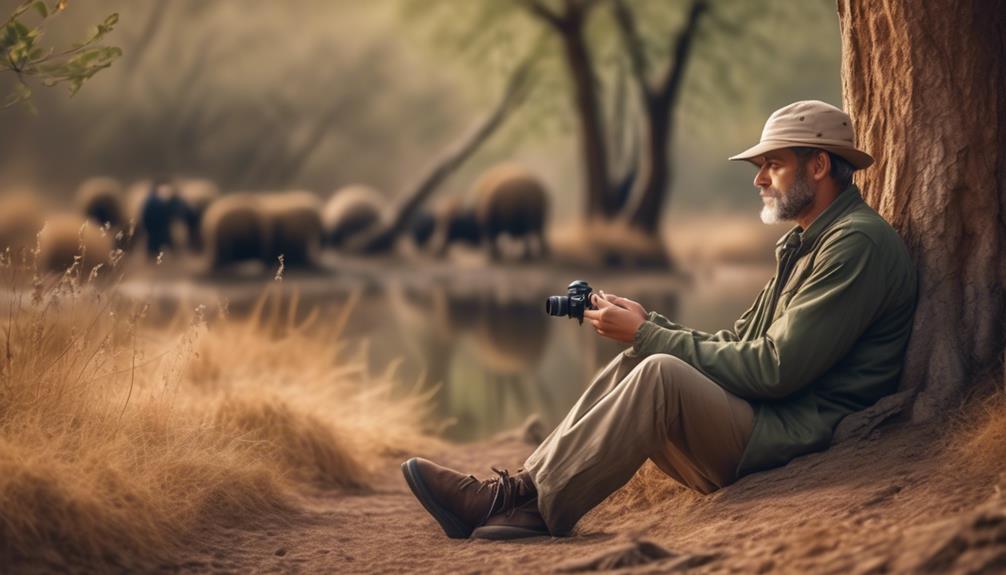
Embrace the art of quiet observation as you wait for wildlife to reveal themselves in their natural habitat. When practicing patience and silence, remember that wildlife often respond negatively to loud noises and sudden movements. Instead, adopt a mindful presence and let the surroundings envelop you. This approach allows you to blend into the environment, making it more likely for animals to carry on with their natural behavior, giving you the chance to witness and capture their activities.
Silent observation is especially crucial for wildlife photography. By remaining quiet and still, you increase your chances of capturing stunning images without disturbing the animals. Pay attention to animal behavior and anticipate their movements, allowing you to anticipate the perfect shot. This level of patience and silence not only benefits your photography but also respects the animals and their habitat.
When you practice patience and silence, you may find that the wildlife becomes more comfortable with your presence. This can lead to truly unique encounters and behaviors that you wouldn't witness if you were loud and impatient. Remember, the natural world operates at its own pace, and by slowing down and being silent, you open yourself up to incredible moments that can't be rushed.
Respect Wildlife and Their Habitat
How can you ensure that you're respecting wildlife and their habitat while seeking unique encounters in the natural world? It's important to approach wildlife encounters with a deep sense of responsibility and mindfulness. Here are some tips to help you respect wildlife and their habitat:
- Understanding Behavior: Take the time to research and understand the behavior of the wildlife you're hoping to encounter. By knowing their habits and routines, you can minimize the risk of disrupting their natural activities. Understanding their behavior also allows you to anticipate their movements, increasing the likelihood of a meaningful encounter while minimizing stress on the animals.
- *Research the Species*: Learn about the specific wildlife species you're interested in encountering. Familiarize yourself with their daily patterns, feeding habits, and preferred habitats. This knowledge will help you approach them with respect and consideration.
- *Minimizing Impact*: Once you have a good understanding of the behavior of the wildlife you wish to see, take steps to minimize your impact on their habitat. This may involve maintaining a safe distance, refraining from feeding or touching the wildlife, and avoiding behaviors that could disrupt their natural environment.
Conservation efforts and responsible tourism play a crucial role in ensuring that wildlife and their habitats are protected for future generations. By being mindful of your impact and respecting the natural behaviors of wildlife, you can contribute to the preservation of these incredible creatures and their environments.
Use Binoculars or a Telephoto Lens
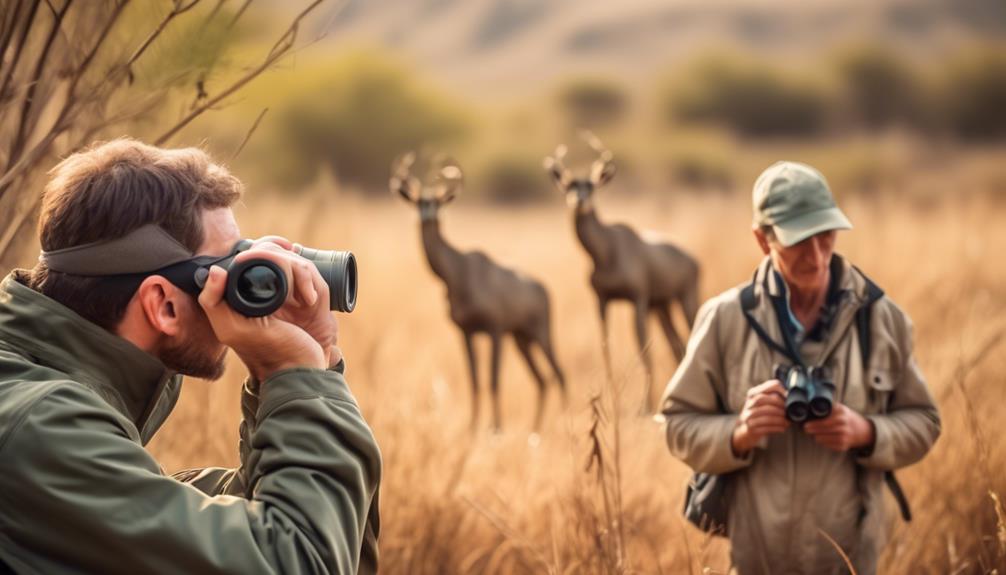
When seeking unique wildlife encounters, using binoculars or a telephoto lens can enhance your experience by allowing you to observe animals from a safe distance without causing disturbance. For photography tips, a telephoto lens with a focal length of at least 300mm is recommended for capturing clear, detailed shots of wildlife from a distance. This type of lens enables you to zoom in on animals without intruding on their natural behavior, ensuring that you can capture stunning photos without causing stress to the creatures you're observing.
When using binoculars or a telephoto lens, it's important to stabilize your equipment to prevent blurriness in your photos. You can use a tripod or a monopod to steady your shots, especially when using a telephoto lens with a longer focal length.
In terms of equipment recommendations, consider investing in high-quality binoculars with a magnification of 8×42 or 10×42. These specifications provide a good balance between magnification and field of view, making it easier to spot and track wildlife. Additionally, binoculars with waterproof and fog-proof features are ideal for outdoor wildlife observation, as they can withstand various weather conditions. For telephoto lenses, opt for ones with image stabilization technology to minimize camera shake and produce sharper images.
Capture Memories Ethically
To capture memories ethically, always prioritize the well-being of the wildlife and respect their natural behaviors when taking photographs or observing them in their habitat. Remember that responsible photography and ethical practices are essential for ensuring that your wildlife encounters are positive experiences for both you and the animals you encounter.
Here are some tips to help you capture memories ethically:
- Responsible Photography
- Use long lenses or zoom capabilities on your camera to maintain a safe and respectful distance from the wildlife. This ensures that you can capture detailed shots without disturbing the animals or their natural behaviors.
- Avoid the use of flash photography, especially when photographing nocturnal or sensitive species. The sudden burst of light can startle or disorient the wildlife, causing unnecessary stress.
- Mindful Observation and Conservation Efforts
- Take the time to observe and learn about the wildlife you encounter. Understanding their behaviors and habitats can help you anticipate their movements and capture more authentic moments without causing disruption.
- Support conservation efforts by sharing your photographs and experiences with others. Use your images and stories to raise awareness about the importance of protecting wildlife and their natural environments.
Frequently Asked Questions
What Are Some Tips for Getting the Best Wildlife Photographs in Low Light Conditions?
To get the best wildlife photographs in low light conditions, adjust your camera settings for low light photography. Study wildlife behavior to anticipate movements. Use a tripod and higher ISO settings for better exposure.
How Can I Ensure That I Am Not Disturbing the Natural Behavior of the Wildlife While Observing Them?
To ensure you're not disturbing wildlife, practice responsible observation. Keep a minimal impact to preserve their natural behavior. Stay at a safe distance, avoid sudden movements, and respect their space. Always prioritize wildlife preservation.
Are There Any Specific Safety Precautions I Should Take When Exploring Off-The-Beaten-Path Locations for Wildlife Encounters?
When exploring remote locations for wildlife encounters, take safety precautions seriously. Always let someone know your plans, carry emergency supplies, and be aware of your surroundings. Also, consider the risks of nighttime photography and wildlife tracking.
What Are Some Ways to Support and Contribute to Local Conservation Efforts While Enjoying Unique Wildlife Encounters?
To support local conservation efforts while enjoying unique wildlife encounters, consider volunteering, donating to conservation organizations, and getting involved in wildlife education and community initiatives. Every contribution helps protect and preserve the natural world.
How Can I Find Out About Any Local Regulations or Guidelines for Interacting With Wildlife in a Particular Area?
First, research local regulations and wildlife guidelines for safe wildlife interaction. It's important to respect natural behavior and take safety precautions. Additionally, consider low light photography and off the beaten path wildlife observation while supporting conservation efforts.
Conclusion
So, next time you're looking for a unique wildlife encounter, remember to do your research, seek out off-the-beaten-path locations, and choose early morning or dusk excursions for the best opportunities.
Utilize local guides, practice patience and silence, and always respect wildlife and their habitat.
Remember to use binoculars or a telephoto lens to get a closer look, and always capture memories ethically.
With these tips, you're sure to have unforgettable wildlife encounters.
